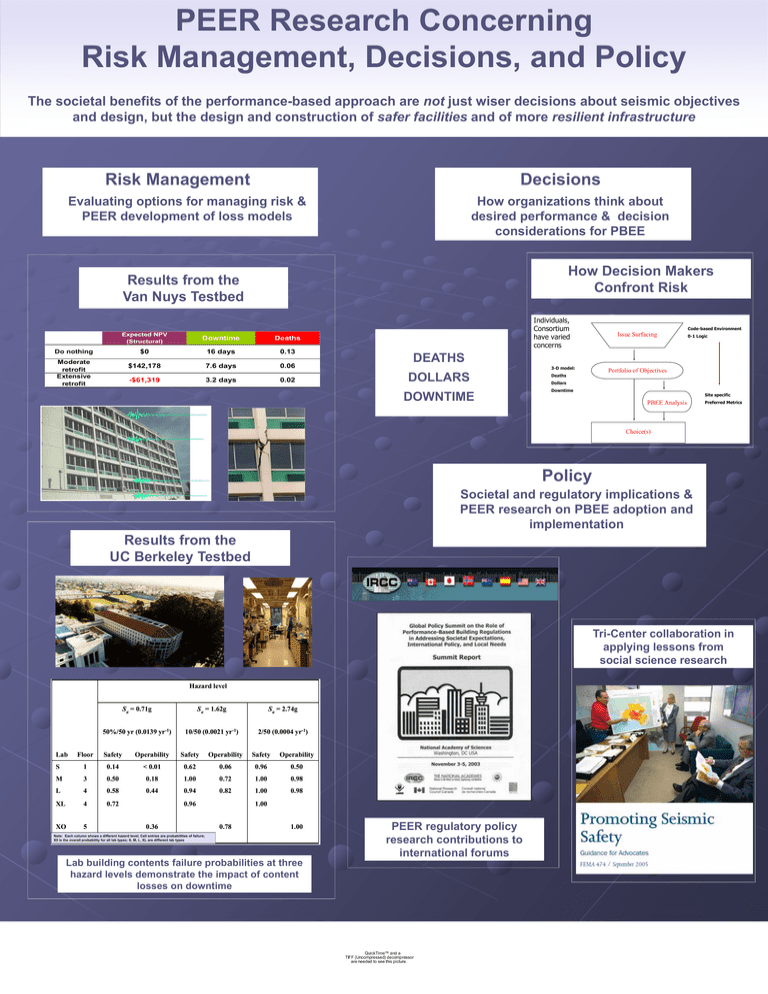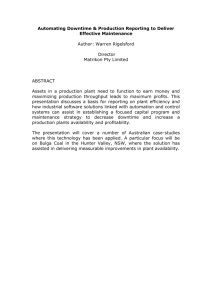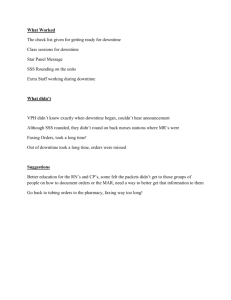PEER Research Concerning Risk Management, Decisions, and Policy Risk Management Results from the
advertisement

PEER Research Concerning Risk Management, Decisions, and Policy The societal benefits of the performance-based approach are not just wiser decisions about seismic objectives and design, but the design and construction of safer facilities and of more resilient infrastructure Risk Management Decisions Evaluating options for managing risk & PEER development of loss models How organizations think about desired performance & decision considerations for PBEE How Decision Makers Confront Risk Results from the Van Nuys Testbed Expected NPV (Structural) Downtime Deaths $0 16 days 0.13 $142,178 7.6 days 0.06 -$61,319 3.2 days 0.02 Do nothing Moderate retrofit Extensive retrofit Individuals, Consortium have varied concerns Code-based Environment Issue Surfacing 0-1 Logic DEATHS 3-D model: DOLLARS DOWNTIME Deaths Portfolio of Objectives Dollars Downtime Site specific PBEE Analysis Preferred Metrics Choice(s) Policy Societal and regulatory implications & PEER research on PBEE adoption and implementation Results from the UC Berkeley Testbed Tri-Center collaboration in applying lessons from social science research Hazard level Lab Sa = 0.71g Sa = 1.62g Sa = 2.74g 50%/50 yr (0.0139 yr-1) 10/50 (0.0021 yr-1) 2/50 (0.0004 yr-1) Floor Safety Operability Safety Operability Safety Operability S 1 0.14 < 0.01 0.62 0.06 0.96 0.50 M 3 0.50 0.18 1.00 0.72 1.00 0.98 L 4 0.58 0.44 0.94 0.82 1.00 0.98 XL 4 0.72 XO 5 0.96 0.36 1.00 0.78 1.00 Note: Each column shows a different hazard level; Cell entries are probabilities of failure; X0 is the overall probability for all lab types; S, M, L, XL are different lab types PEER regulatory policy research contributions to international forums Lab building contents failure probabilities at three hazard levels demonstrate the impact of content losses on downtime Poster by P. May (UW) and M. Comerio (UCB) QuickTime™ and a TIFF (Uncompressed) decompressor are needed to see this picture.


